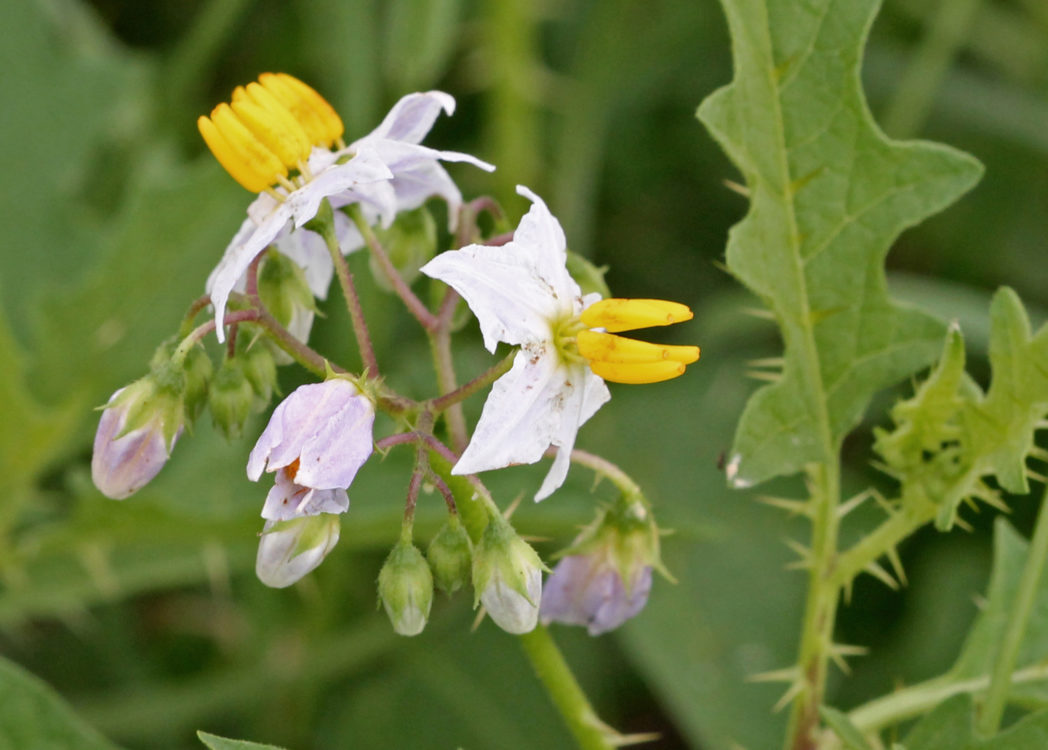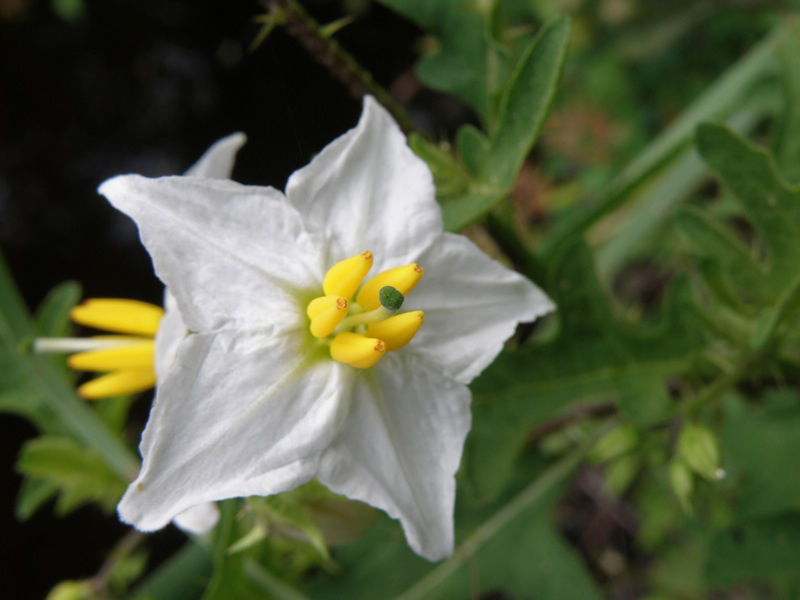Carolina horsenettle
Pictured above: Carolina horsenettle (Solanum carolinense) by Stacey Matrazzo. Click on terms for botanical definitions. View post as a PDF.
Carolina horsenettle (Solanum carolinense) is a perennial wildflower that occurs naturally in pastures, disturbed sites and along roadsides. It blooms throughout the summer and is pollinated primarily by bumble bees, although many insects are known to visit the flower. Some birds, such as quail and wild turkey, eat its fruit.
Despite its common name, Carolina horsenettle is not a true nettle. It is actually in the same family as tomatoes, potatoes, eggplant and bell peppers. True nettles belong to the family Urticaceae.

Carolina horsenettle’s flower is white or bluish-white and five-petaled, creating a star-shaped corolla. Petals are often reflexed. Bright yellow stamens are protruding and prominent. Leaves are petiolate, ovate to elliptic, and have deep, irregular lobes and sharply toothed margins. They are alternately arranged. The leaf surface is covered in fine hairs. Seeds are born in dark green berries that turn yellow when ripe.
The plant contains a toxic alkaloid that helps protect it from predation. This renders all parts of the plant poisonous to most mammals, including humans. Its spiny leaves make it difficult to handle as the spines can penetrate the skin.
Family: Solanaceae (Nightshade family)
Native range: Central and north Florida,
To see where natural populations of Carolina horsenettle have been vouchered, visit florida.plantatlas.usf.edu.
Hardiness: Zones 7–10
Lifespan: Perennial
Soil: Wet to dry well-drained soils
Exposure: Full sun
Growth habit: 1–3’ tall
Propagation: Seed, division
Carolina horsenettle plants are not generally propagated for commercial sale. Look for it in bloom along roadsides during summer months.

